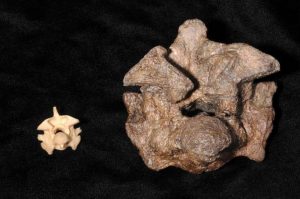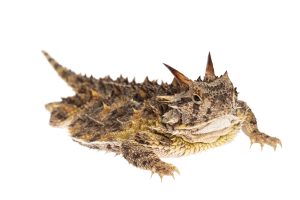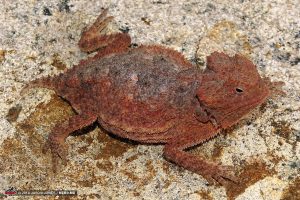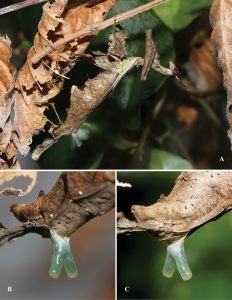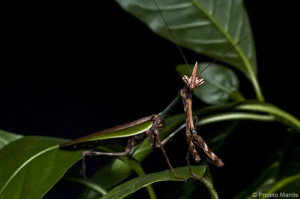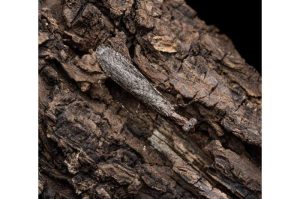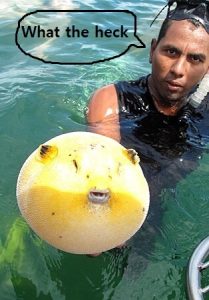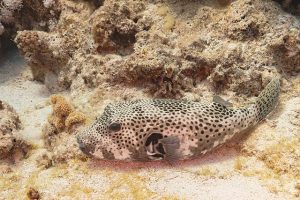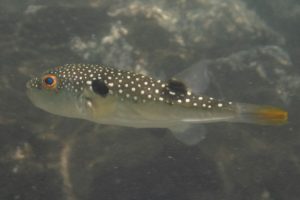Podcast: Play in new window | Download (Duration: 7:52 — 8.6MB)
Thanks to Nathan-Andrew for suggesting giant ichthyosaurs!
Further reading:
Paleontologists unearth what may be the largest known marine reptile
Ruby and some other scientists with the ichthyotitan fossils [photos taken from this page]:

How the pieces fit together:
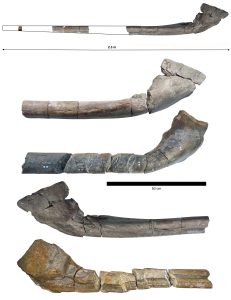
Show transcript:
Welcome to Strange Animals Podcast. I’m your host, Kate Shaw.
This week we’re going to learn about some of the biggest animals that have ever swum through the oceans of this planet we call Earth, a suggestion from Nathan-Andrew.
We talked about ichthyosaurs way back in episode 63, but we haven’t really discussed these giant marine reptiles since. Ichthyosaurs and their close relations were incredibly successful, first appearing in the fossil record around 250 million years ago and last appearing around 90 million years ago. Most ichthyosaurs grew around 6 and a half to 11 feet long, or 2 to 3.3 meters, depending on species, so while they were pretty big animals, most of them weren’t enormous. They would have been fast, though, and looked a lot like fish or dolphins.
Even though ichthyosaurs were reptiles, they were warm-blooded, meaning they could regulate their body temperature internally without relying on outside sources of heat. They breathed air and gave birth to live babies the way dolphins and their relations do. They had front flippers and rear flippers along with a tail that resembled a shark’s except that the lower lobe was larger than the upper lobe. Some species had a dorsal fin too. They had huge eyes, which researchers think indicated they dived for prey. Not only were their eyes huge, they were protected by a bony eye ring that would help the eyes retain their shape even under deep-sea pressures.
We know a lot about what ichthyosaurs ate, both from coprolites, or fossilized poops, and from the fossilized remains of partially digested food preserved in the stomach area. Most ichthyosaurs ate cephalopods like squid and ammonites, along with fish, turtles, and pretty much any other animals they could catch. Ichthyosaurs also ate smaller ichthyosaurs.
Nathan-Andrew specifically suggested we look at Shastasaurus and Shonisaurus, two closely related genera that belong to the ichthyosaur family Shastasauridae. Both genera contained species that were much larger than the average dolphin-sized ichthyosaur. The biggest species known until recently was Shonisaurus sikanniensis, which grew to almost 70 feet long, or 21 meters.
Scientists are divided as to whether S. sikanniensis should be considered a species of Shonisaurus or if it should be placed in the genus Shastasaurus. The main difference is that species in the genus Shastasaurus were more slender and had a longer, pointier rostrum than species in the genus Shonisaurus. Either way, S. sikanniensis was described in 2004 and at the time was the largest ichthyosaur species ever discovered.
But in May of 2016 a fossil enthusiast came across five pieces of what he suspected was an ichthyosaur bone along the coast of Somerset, England. He sent pictures to a couple of marine reptile experts, who verified that it was indeed part of an ichthyosaur’s lower jawbone, called a surangular. Studies of the fossil pieces compared it to S. sikanniensis, and it was similar enough that the new fossil was tentatively placed in the family Shastasauridae. Based on those comparisons, scientists estimated that this new ichthyosaur might have grown to around 72 feet long, or 22 meters, or even longer.
Almost exactly four years after the 2016 discovery, in May of 2020, an 11-year-old named Ruby Reynolds was looking for fossils with her father on the beach at Somerset. She discovered two big chunks of a fossil bone that she thought might be important. Ruby’s father contacted a local paleontologist, who in turn reached out to the man who had found and helped study the 2016 surangular bone. They studied the 2020 fossil and determined that it too was a surangular bone, and looked a lot like the one found in 2016. Not only was it better preserved and more complete, it was bigger.
Ruby and her father joined the team of paleontologists searching for more pieces of the surangular, and they actually found them. The pieces fit together like jigsaw puzzle pieces.
The bone has been dated as being about 202 million years old, from right before the end-Triassic extinction event and 13 million years after the other most recent ichthyosaur fossils from this era. It was described in early 2024 and named Ichthyotitan, and I’m happy to report that Ruby and her father helped with the research and are both included in the list of authors in the paper describing it. They also helped name it.
The estimated size of this specific Ichthyotitan specimen is about 25 meters, or 82 feet. That’s incredibly huge, rivaling the biggest whales alive today. But one other detail about this ichthyotitan bone is even more stunning. When the animal died, it was still growing. It hadn’t reached its full size yet.
As a comparison, the biggest animal ever known to have lived is the blue whale. A blue whale can grow up to 98 feet long, or 30 meters. Until now, scientists thought that no other animal had ever reached the size of a blue whale. Now, some paleontologists suspect that a full-grown ichthyotitan might have been at least as long or even longer than a blue whale.
The next step, of course, is to find more of the fossils. Ichthyotitan’s only fossils so far have been found in Somerset, England, but fossils of closely related ichthyosaurs have been found in parts of California, Nevada, British Columbia, China, Italy, Switzerland, and Tibet. In other words, they might be found just about anywhere with rocks dating to about 200 million years ago. The next time you’re out for a walk, keep a look-out just in case you spot a bone belonging to the biggest animal that ever lived.
You can find Strange Animals Podcast at strangeanimalspodcast.blubrry.net. That’s blueberry without any E’s. If you have questions, comments, or suggestions for future episodes, email us at strangeanimalspodcast@gmail.com. We also have a Patreon at patreon.com/strangeanimalspodcast if you’d like to support us for as little as one dollar a month and get monthly bonus episodes.
Thanks for listening!
